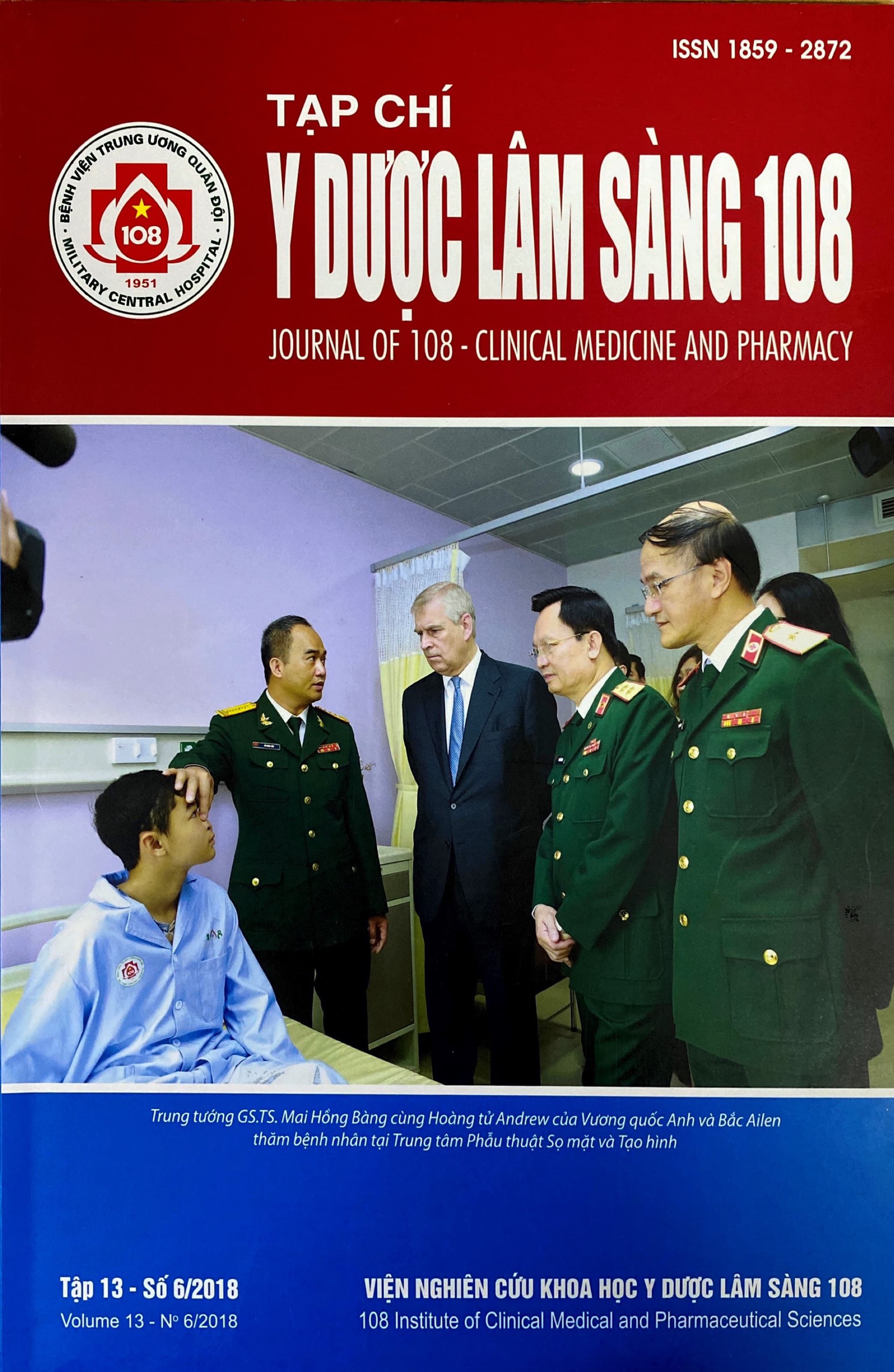Research some laboratorical features of food allergy in children
Main Article Content
Keywords
Abstract
Objective: To describe the pediatric allergy clinical characteristics of pediatric patients treated at the Vietnam National Children’s Hospital from June 2014 to June 2015. Subject and method: A cross-sectional descriptive study of 86 pediatric patients food allergy treatment in the Immunology - Allergies Department was selected in the study. Skin prick testing, skin patch test, stimulant stimulation test, eosinophils in blood, elevated total IgE and elevated specific IgE is performed. Result: The rate of skin prick test and skin patch test positive for cow's milk protein was highest (73.3% and 89.5%), followed by shrimp (15.1% and 15.8%), crabs (11.6%), beef (10.5%), egg white (8.1%), the rate of skin prick test positive in the ≥ 6 months group was 25.5%, higher than the < 6 months group was 5.1% (p<0.05). Eosin accounted > 4% for 32.4%, red blood cell in stool accounted for 42.9%, total IgE is higher than 230IU/ml, accounting for 19.0%. Specific IgE increased with cow's milk protein (beta lactoglobuline and casein); the rate of susceptibility to beef was 17.5%, in which the susceptibility was 6.4%; high susceptibility rate with egg yolk 1.6%. Conclusion: Some invivo and in vitro can support for the diagnosis of food allergies, such as: Skin test, skin-to-skin tests or IgE-specific test. However, the diagnosis of food allergies is especially challenging for children.
Article Details
References
2. Chu Thị Thu Hà (2013) Bước đầu nghiên cứu tần suất và biểu hiện lâm sàng của dị ứng sữa bò ở trẻ từ 0 đến dưới 3 tuổi tại Hà Nội. Tạp chí Nhi Khoa, tập 6, số 2, tháng 4, tr. 22-26.
3. Nguyễn Ngọc Quỳnh Lê và cộng sự (2015) Tìm hiểu mối liên quan giữa test lẩy da, test áp và IgE đặc hiệu trong chẩn đoán dị ứng đạm sữa bò ở trẻ em. Tạp chí Y khoa 8(2) tr. 58-62.
4. Anna Nowak-Wefrzyn et al (2014) Reaction to foods and reaction to food additives. Middleton's ALLERGY principles and practice, eight Edition Philadelphia: ELSEVIER 2: 1310-1356.
5. Antonella Cianferoni et al (2009) Food allergy: Review, classification and diagnosis. Allergology International 58: 457-466.
6. Bhombal S, Bothwell MR, Bauer SM (2006) Prevalence of elevated total IgE and food allergies in a consecutive series of ENT pediatric patients. Otolaryngol Head Neck Surg 134(4): 578-580.
7. Joshua A Boyce et al (2010) Guidelines for the diagnosis and management of food allergy in the United States: Report of the NIAID-Sponsored Expert Panel. J Allergy Clin Immunol 126: 1-58.
8. Kaczmarski et al (2013) The natural history of cow's milk allergy in north-eastern Poland. Advances Medical Sciences: 22-30.
9. Paul Shekelle et al (2010) Prevalence, natural history, diagnosis, and treatment of food allergy: A systematic review of the evidence. National Institute on Allergy and Infectious Diseases: 1-5.
10. Rennick GJ (2006) Skin prick testing to food allergens in breast-fed young infants with moderate to severe atopic dermatitis. Australas J Dermatol: 41-45.
 ISSN: 1859 - 2872
ISSN: 1859 - 2872
